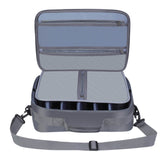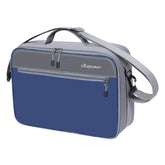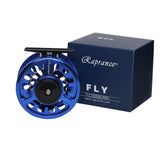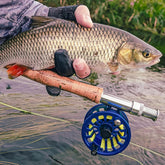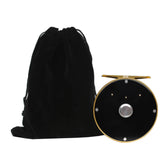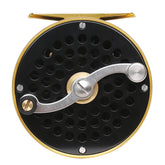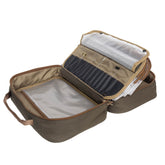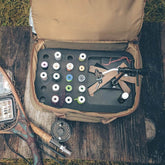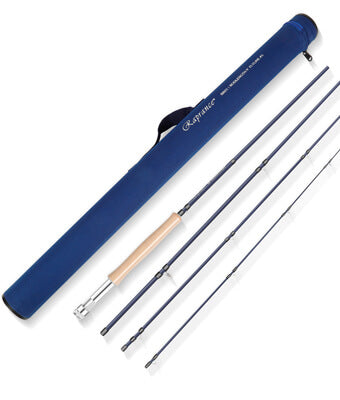Fly Line: A Comprehensive Guide to Scandinavian, Skagit, and Switch Lines for Effective Fly Fishing
Choosing the right fly line can significantly impact your success in fly fishing. Understanding the various types of lines available, such as Scandinavian lines, Skagit lines, and switch lines, is essential for targeting different species and fishing environments. Selecting the appropriate line will improve your casting accuracy and overall fishing experience.

When I began my fly fishing journey, the diversity of fly lines overwhelmed me. Each type, from the Short Skagit for heavy sinking tips to the longer Scandinavian lines designed for delicate presentations, serves a specific purpose. Knowing when and how to use these lines can make all the difference in reaching your quarry and achieving a satisfying catch.
In this blog post, I will explore the unique characteristics of these fly lines and share insights into their benefits. By understanding the nuances of Scandinavian, Skagit, and switch lines, you’ll be better equipped to maximize your time on the water and enjoy the art of fly fishing.
Fly Line Fundamentals
Understanding the various aspects of fly lines is essential for effective fly fishing. Key components such as line types, construction techniques, and proper selection based on fishing conditions play a significant role in my overall success on the water.
Types of Fly Lines
I often choose from several primary types of fly lines based on my needs. Floating lines are ideal for surface activities, while sink tip lines help me reach deeper waters by facilitating quick sinking of the fly. Full sinking lines can also be advantageous in specific conditions.
Within these categories, there's a variety of taper designs. For example, weight-forward lines are popular due to their ease of casting and distance, while double taper lines offer versatility for delicate presentations, especially for spook-sensitive trout. Understanding these types ensures I can adapt to various fishing scenarios.
Fly Line Construction and Materials
Most fly lines are made from PVC or polyurethane, providing durability and flexibility. A line's structure includes a core, often made from braided monofilament, and a coating that affects its buoyancy and casting characteristics.
The grain weight of a line influences my casting distance and accuracy. Line weights range from 1 to 14 grains or more and should match my rod's specifications. When fishing for salmon or trout, using the appropriate grain weight optimizes performance in diverse water conditions.
Recent technology in fly line construction has improved performance significantly. Features like micro-loop connections facilitate the attachment of backing and leaders, enhancing my overall setup efficiency.
Choosing the Right Fly Line
Selecting the proper fly line is crucial for varying water conditions and targeted species. I assess factors such as water temperature, fish behavior, and the type of cast I intend to use.
For clear, calm waters, a floating line helps maintain a delicate presentation. In contrast, a sink tip line may be necessary in fast-moving streams where fish tend to dwell deeper.
Additionally, matching the line with the right backing and leader is important. The leader length and material should complement the fly line to ensure stealth and presentation accuracy, significantly impacting my catch rate.
Specialized Fly Lines

When selecting fly lines for specific fishing techniques, it's essential to understand the unique characteristics of Scandinavian, Skagit, and Switch lines. Each type is designed to enhance performance in various conditions and with different casting methods.
Scandinavian Lines
Scandinavian lines, often referred to as Scandi lines, are designed for delicate presentations and longer casts. They feature long front tapers that allow for smooth delivery of lightweight flies, making them suitable for dry fly fishing.
These lines excel when paired with lighter setups and are typically used with switch or spey rods. Their design promotes line speed, enabling anglers to make accurate casts even in challenging wind conditions. The use of polyleaders with Scandi lines further enhances versatility, allowing for a range of sink rates to adapt to different water conditions.
Skagit Lines
Skagit lines are particularly effective for casting larger flies and heavy sink tips. They have short head lengths, which facilitate easier loading of the rod during the casting stroke. This feature makes them ideal for fishing in fast or turbulent waters where precision is key.
I often find that Skagit heads work well with various MOW tips, offering adaptability in changing conditions. This setup allows me to manipulate line depth efficiently while still achieving the desired presentation. These lines are typically used with a switch rod or a two-handed spey rod to maximize casting distance and control.
Switch Lines
Switch lines are designed for versatility, accommodating both single and double-handed casting techniques. These lines often feature a mid-length head that provides a balance between ease of casting and control.
Some Switch lines have interchangeable tips, including various sink tips or floating options, enabling adjustments based on specific fishing scenarios. This adaptability makes them an excellent choice for anglers who switch between methods or conditions frequently.
Using versileaders with Switch lines adds further flexibility, allowing for quick changes in presentation style. Overall, Switch lines cater to a wide range of fishing situations, making them appealing for many anglers.
Advanced Casting Techniques

Mastering advanced casting techniques can significantly enhance my fly fishing experience. I focus on two main strategies: learning the basics of Spey casting and improving my distance and precision.
Spey Casting Basics
Spey casting is essential for fly fishing, especially when using a two-handed fly rod. I use the D-loop to load the rod effectively, ensuring proper energy transfer during the cast.
To initiate the cast, I position the rod high and create a strong D-loop behind me. This loop enables a smooth delivery of the line forward.
I sometimes utilize techniques like the Perry Poke to make casts without needing a backcast. This is useful in tight spaces. Additionally, the Snap Z is another technique I incorporate for a quick, efficient setup. Each method requires practice to perfect tight loops and maximize my casting distance.
Achieving Distance and Precision
To achieve distance with my casts, I often rely on shooting heads, such as T-11 and T-14. These lines are designed to minimize air resistance.
During casting, I maintain a firm grip and accelerate smoothly through my stroke. Ideal casting conditions play a crucial role; I try to avoid strong winds or obstacles that can disrupt my lines.
I also focus on the timing of my forward cast to maintain accuracy. I visualize the target and use my body to guide the movement. By combining proper techniques with the right gear, I improve my overall casting performance significantly.
Application in Different Fishing Scenarios
Choosing the right fly line is critical depending on the fishing scenario, primarily influenced by target species and water conditions. I assess these factors carefully to improve my chances of success.
Fishing for Different Species
Different species require specific approaches in terms of fly line. For instance, when targeting steelhead or salmon, I prefer using longer, heavier lines that ensure a proper sink rate and enhanced fly presentation.
In many cases, salmon anglers benefit from using fast sinking tips. This allows them to present flies at the optimal depth effectively. Conversely, for Atlantic salmon, a floating tip or intermediate tip might be more suitable, especially in low water conditions. Using the appropriate densities, like slow sink lines, can help target these species more efficiently.
Adapting to Water Conditions
Water conditions significantly influence my choice of fly line. In swift currents, I lean towards skagit lines that enable me to cast heavier flies while maintaining control. These lines can efficiently cut through the current, allowing for better presentation.
In contrast, during low water conditions, lighter and more delicate lines work best. In these situations, I often utilize switch lines or floating tips to maintain a natural drift. Adjusting my line based on the current speed and water depth helps me present the fly more effectively, enhancing my chances of a successful catch.

